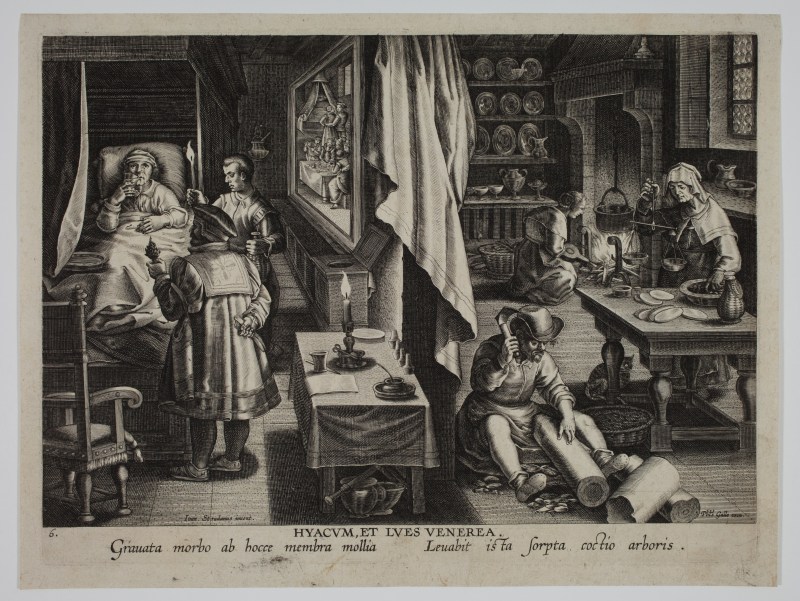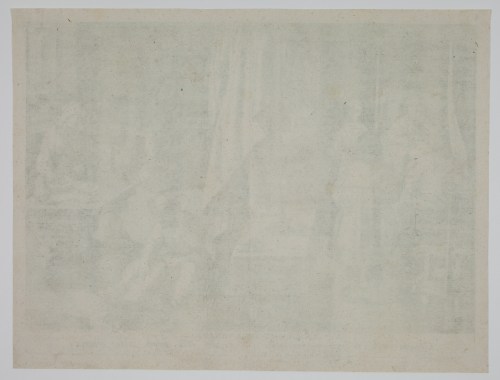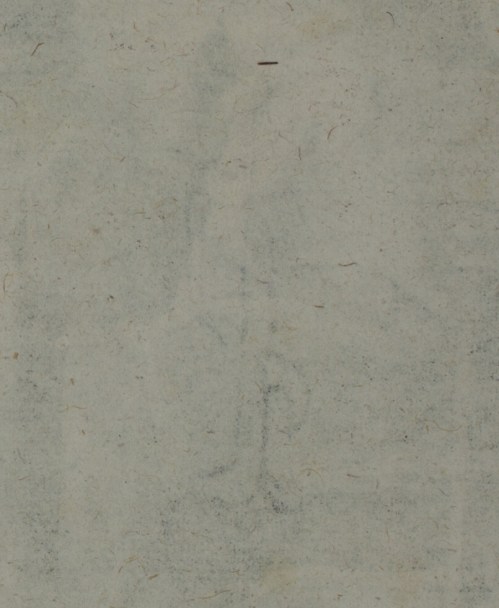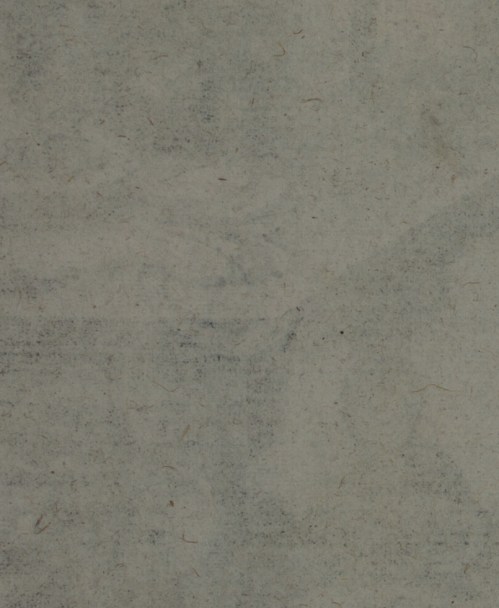Philip GALLE (attributed to): Hyacum et lues venera [The Discovery of Guaicum as a cure for veneral infection] after Johannes STRADANUS - ca. 1588
SOLD
Engraving, 200 x 270 mm. New Hollstein (Johannes Stradanus) 328, 1st state (of 3).
Plate no. 6 in the Nova Reperta series.
Impression of the 1st state (of 3) before erasing of Philip Galle’s address. Four successive editions of the Nova Reperta series are known. It was first published around 1591 by Philip Galle in Antwerp and was then successively republished by Karel de Mallery (after 1612), by Philip Galle's son, Theodoor (before 1636) and by Theodoor’s son, Johannes Galle (before 1677).
Very fine impression printed on watermarked laid paper (Gothic P with flower, and another indecipherable watermark). In very good condition. Small margins (sheet: 216 x 285 mm).
This plate represents the discovery of guaiacum as a remedy against syphilis. The print represents a room divided in two by a partition: on the right, a servant is hewing guaiacum wood into shavings, on the left, a sick man on a bed drinks a guaiacum decoction under the watchful gaze of a doctor. A picture hanging on the partition represents a scene in a brothel, a reference to the way syphilis is most often transmitted.
“This famous engraving representing guaiacum as the cure for syphilis illustrates countless scholarly texts about the disease in early modern Europe. […] Scholars have rightly related the print to Girolamo Fracastoro’s renowned poem, Syphilis morbus gallicus (1530) - a source Stradanus used when designing a print of Columbus for the Americae retectio series.” (Renaissance invention, pp. 101-102)
However the print refers to numerous other documents as well, pictures or texts on the topic of syphilis, as indicated by Alessandra Foscati and Lia Markey: Johannes Stradanus “clearly looked to iconography from the frontispieces of medical texts, from the visual culture of hospitals, and from instructive popular printed images and broadsheets. […] What makes Stradanus’s guaiacum image so different from these other images of the disease and from his other American imagery is the complete lack of allegory in the image. Stradanus presents instead an incredibly detailed view of the way to cook and administer the drug within a middle-class context. […] In this way, the print functioned as visual instructions for the use of the drug, translating in image the many textual descriptions of the use of guaiacum and seemingly provinding a firsthand account of the cure.” (Renaissance invention, pp. 106-109)
Johannes Stradanus’ original drawing is in the Herzog Anton Ulrich-Museum Braunschweig.
Reference: Alessandra Foscati and Lia Markey: “A New World Disease and Therapy - Stradanus’s Guaiacum Engraving” in Renaissance Invention: Stradanus's Nova Reperta, pp. 101-114, 2020.






